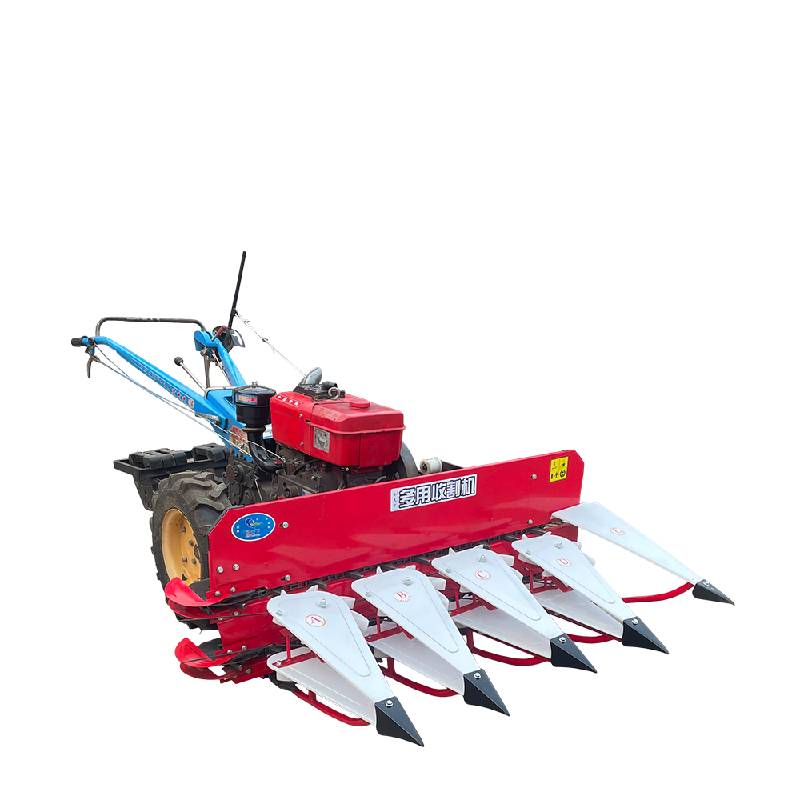wheat binder machine
The Importance of Wheat Binder Machines in Modern Agriculture
The agricultural sector has witnessed significant advancements over the years, driven by the demand for efficiency and productivity. One of the key innovations contributing to these advancements is the wheat binder machine. Traditionally, harvesting wheat involved labor-intensive processes that required substantial manpower and time. However, the invention of the wheat binder has revolutionized the way wheat is harvested, making it faster, easier, and more efficient.
Understanding Wheat Binder Machines
A wheat binder machine is a type of agricultural machinery designed to harvest wheat and other similar crops. Its primary function is to cut the wheat plants, bind them into sheaves, and sometimes incorporate the initial stages of threshing. The machine consists of several essential components, including a cutting mechanism, a binding apparatus, and a means of collecting the bound sheaves. Typically, the machine is powered by either a tractor or an engine, allowing it to navigate through the fields with ease.
Historical Context
The first wheat binders were introduced in the late 19th century, marking a pivotal moment in agricultural technology. Prior to their advent, farmers relied on handheld tools such as sickles and scythes to cut wheat manually. This traditional method was not only labor-intensive but also time-consuming, making it a challenge to harvest crops before they were damaged by weather conditions. The introduction of wheat binders significantly reduced the time spent in the fields and increased the overall yield, as farmers could harvest larger areas in shorter periods.
Advantages of Wheat Binder Machines
1. Efficiency One of the primary benefits of using a wheat binder machine is the speed at which harvesting can be accomplished. A single machine can replace the work of multiple laborers, enabling farmers to cover more ground in less time.
2. Cost-Effectiveness While the initial investment in a wheat binder machine may be substantial, the long-term savings in labor costs and increased yield make it a cost-effective solution. Farmers can allocate fewer resources to manual labor while improving their output.
wheat binder machine

3. Consistency and Quality Wheat binder machines provide uniform cutting and binding of wheat stalks, resulting in a high-quality product. This consistency is crucial for subsequent processing stages, such as threshing and milling.
4. Reduced Labor Intensity The mechanization of the harvesting process allows farmers to minimize physical strain on workers, making it easier for them to manage large farms without the challenge of seasonal labor shortages.
5. Adaptability Modern wheat binder machines are designed with technological advancements that allow them to adapt to various soil types and conditions, ensuring optimal performance regardless of the farming environment.
Challenges and Considerations
Despite the numerous advantages, the adoption of wheat binder machines requires careful consideration. Farmers must evaluate the costs associated with purchasing and maintaining such equipment, as well as the training needed for operators. Additionally, while mechanization has greatly improved efficiency, it has also led to reduced demand for manual labor, impacting rural employment levels.
Future Outlook
As technology continues to advance, the future of wheat binder machines looks promising. Innovations in automation, precision farming techniques, and improved materials are expected to enhance the performance and efficiency of these machines. The integration of smart technology, such as sensors and data analytics, will further optimize the harvesting process, helping farmers make informed decisions that maximize their yield.
In conclusion, wheat binder machines play a vital role in modern agriculture, enabling farmers to efficiently harvest crops while maximizing productivity and ensuring quality. As the agricultural landscape continues to evolve, the importance of such machinery will only grow, highlighting the need for continued innovation and investment in agricultural technologies. Embracing these advancements will not only benefit individual farmers but will also contribute to the overall food security of our ever-growing global population.
Latest news
-
When to Upgrade Your Old Forage HarvesterNewsJun.05,2025
-
One Forage Harvester for All Your NeedsNewsJun.05,2025
-
Mastering the Grass Reaper MachineNewsJun.05,2025
-
How Small Farms Make Full Use of Wheat ReaperNewsJun.05,2025
-
Harvesting Wheat the Easy Way: Use a Mini Tractor ReaperNewsJun.05,2025
-
Growing Demand for the Mini Tractor Reaper in AsiaNewsJun.05,2025







